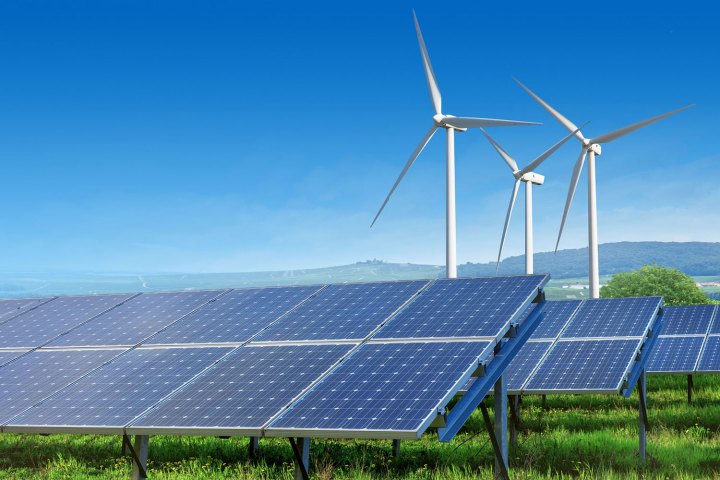
These are just some of the questions answered by Renewables.ninja, an interactive web tool that estimates the amount of wind and solar energy that could be generated at specific locations around the world. What began as chore grew into a vocation. Now the resource is available for free online.
If necessity is the mother of invention then urgency is its uncle. Climate-conscious scientists Dr. Stefan Pfenninger and Dr. Iain Staffell felt both of these forces when they developed Renewables.ninja.
“Back in 2014 both Iain and myself realized that we needed hourly data on what wind farms and (solar) PV panels are producing all across Europe for our research,” Pfenninger of ETH Zürich told Digital Trends. “There are commercial providers of such data, which large project developers use, but they are not affordable for us academics. So we spent a lot of time building our own simulations and validating them by comparing them to power production data from real wind and solar plants.”
“There are commercial providers of data, which large project developers use, but they are not affordable for us academics.”
Staffel and Pfennigener weren’t alone — their peers in academia and at NGOs faced similar issues gaining access to cheap and reliable data on wind and solar energy production. They gathered publicly available data from sources like NASA and the European Centre for Medium-Range Weather Forecasts, and began to develop a comprehensive predictive resource to save others time.
“It was a fortuitous combination of circumstances,” Pfenninger said. “We realized that we could collaborate to get both wind and PV done and, thanks to my past experience working with web applications, I felt confident that I could get a web application up and running that would let others run our simulations on demand.”
In the web tool, users can input dates and exact coordinates or select a location on the map. They then choose metrics for either wind or solar energy, including the height and model of turbines, and the angular tilt of panels. After a test run, graphs depict output and capacity throughout the year.

By compiling the data and running studies themselves, Staffel and Pfenninger found that the current average capacity of European wind farms floats just over 24 percent. This figure is acceptable, thinks Staffell, who lectures on sustainable energy systems at Imperial College London, given that varying degrees of windiness throughout the year mean farms can generate 100 percent of their capacity about one quarter of the time. But it isn’t ideal.
To inch nearer to full-time full capacity, manufacturers have begun building taller turbines with bigger blades that stretch upwards and outwards to tap into higher wind speeds. They’re also moving developments to regions with stronger winds, such as further out to sea. With these developments, the researchers estimate Europe’s average capacity could increase to 31 percent.
Staffel and Pfenninger published a paper detailing their wind energy findings last week in the journal Energy.
“It was a fortuitous combination of circumstances.”
But after compiling the data, developing the web tool, and publishing their study, the scientists were left with one baffling question. “How come nobody looked into the validity and accuracy of these models?” Staffel asked.
“We found that the NASA weather data over- and under-estimates wind speeds by up to 50 percent across Europe,” he said. “And previous researchers had just used this kind of data as-is without testing it first.” He notes that a few influential papers have been published using this data, calling into question the validity of the studies themselves. “Admittedly it has only become possible with a lot of effort on compiling historic outputs,” he added, “but it just goes to show how important the scientific method of testing your theory against reality is.”
Still, with wind and solar energy already undercutting conventional power stations across the globe, the researchers are optimistic about the future of renewable energy. Last year, Costa Rica ran on 99 percent renewable energy. In May, the U.K. generated more solar than coal energy for the first time and, last month, the country approved the development of the world’s largest wind farm off the its north-eastern coast. Meanwhile, the U.S. is set to open its first offshore wind farm in October.
The biggest obstacles for renewables won’t be engineering though, said Staffel, but social and political blocks. Sure, the U.S. will soon launch its first offshore wind farm but many advocates would ask, What’s taken so long? Critics often claim wind farms are expensive, unsightly, or unreliable.
“The engineering challenges, such as how to deal with intermittent power output, are much easier than the social and political challenges from having to support expensive pre-commercial technologies,” he said.
These ventures are becoming for profitable though and investors are catching wind. “We are now moving to a world where renewables make straight business sense in more and more countries,” Staffel said.
So, what is the wind energy potential of Anchorage, Alaska? The average current capacity is about 25 percent, according to Renewables.ninja. Newer, taller turbines could mean an increase of 10 percent.
As for the solar energy potential of your backyard — you’ll have to figure that one out yourself.


